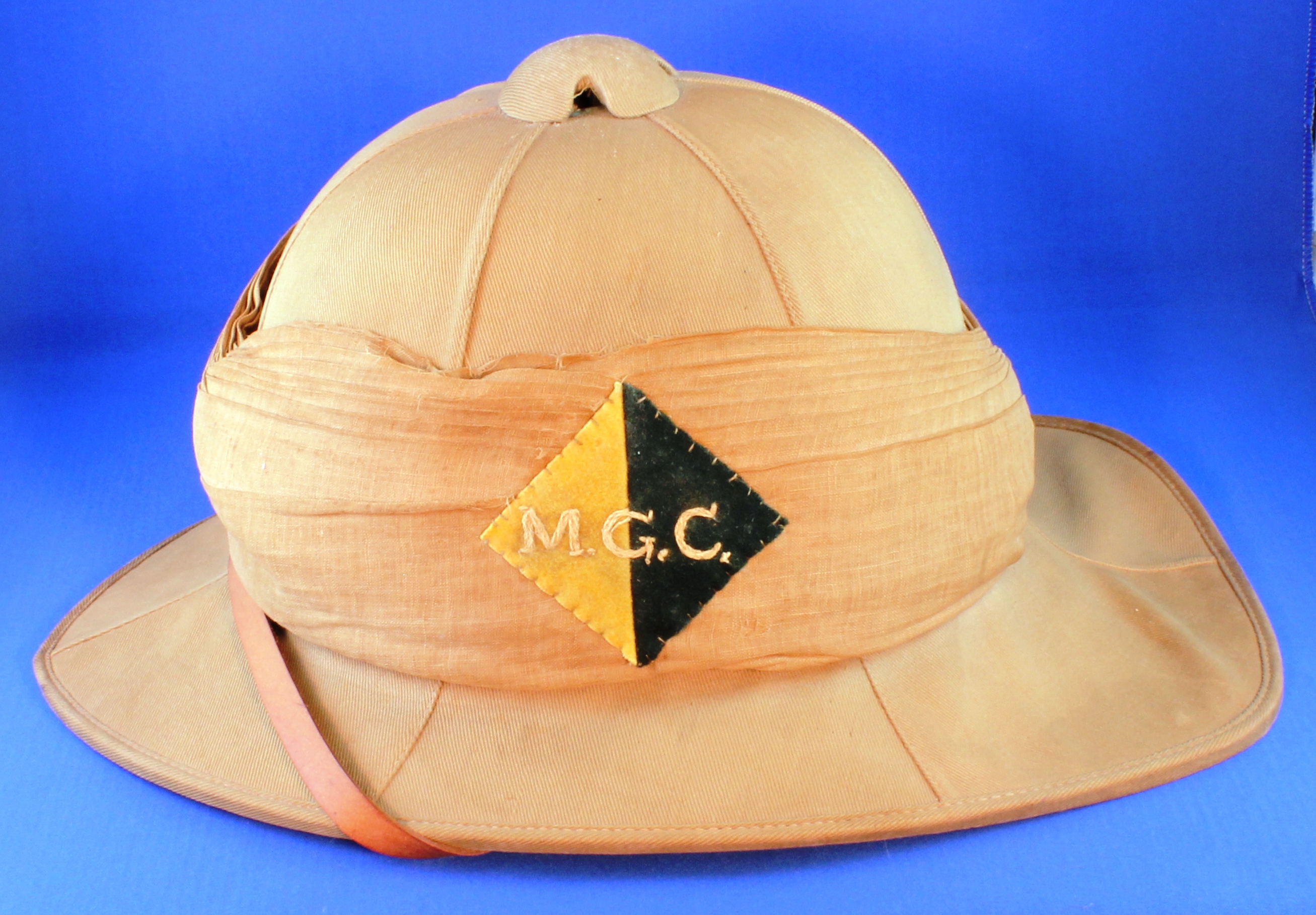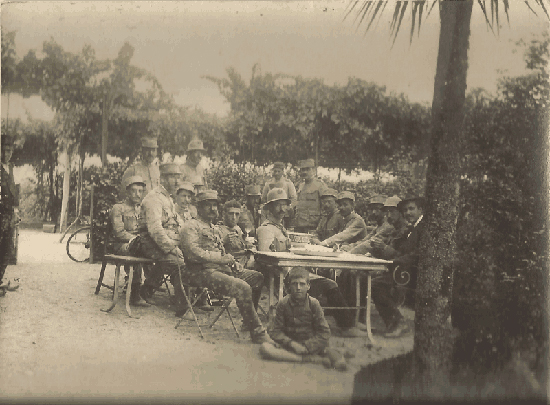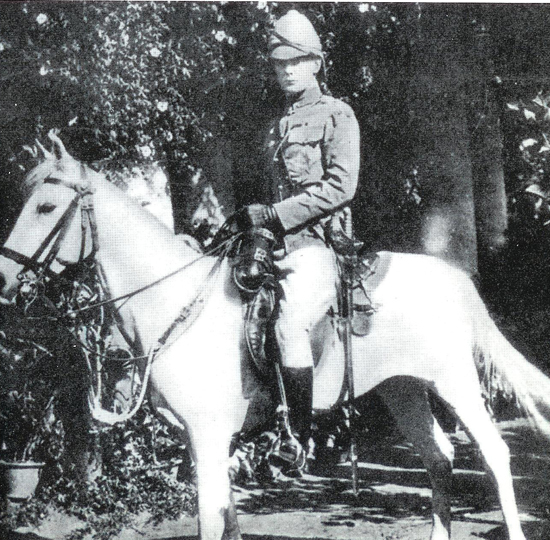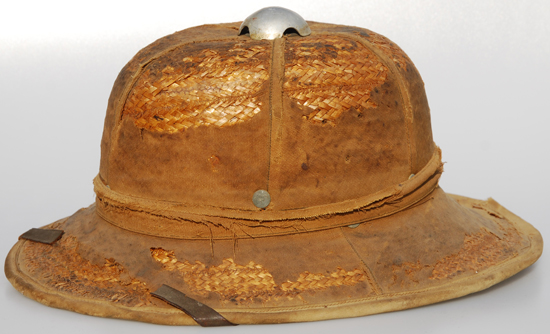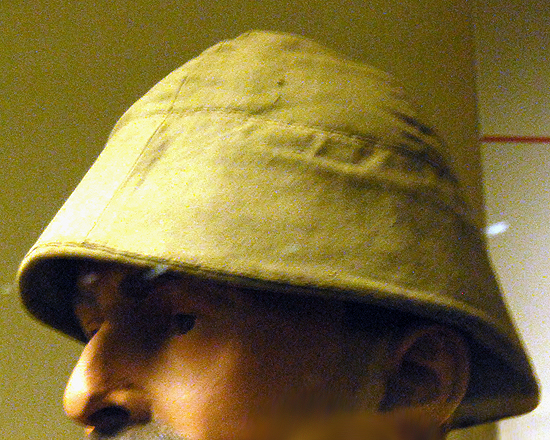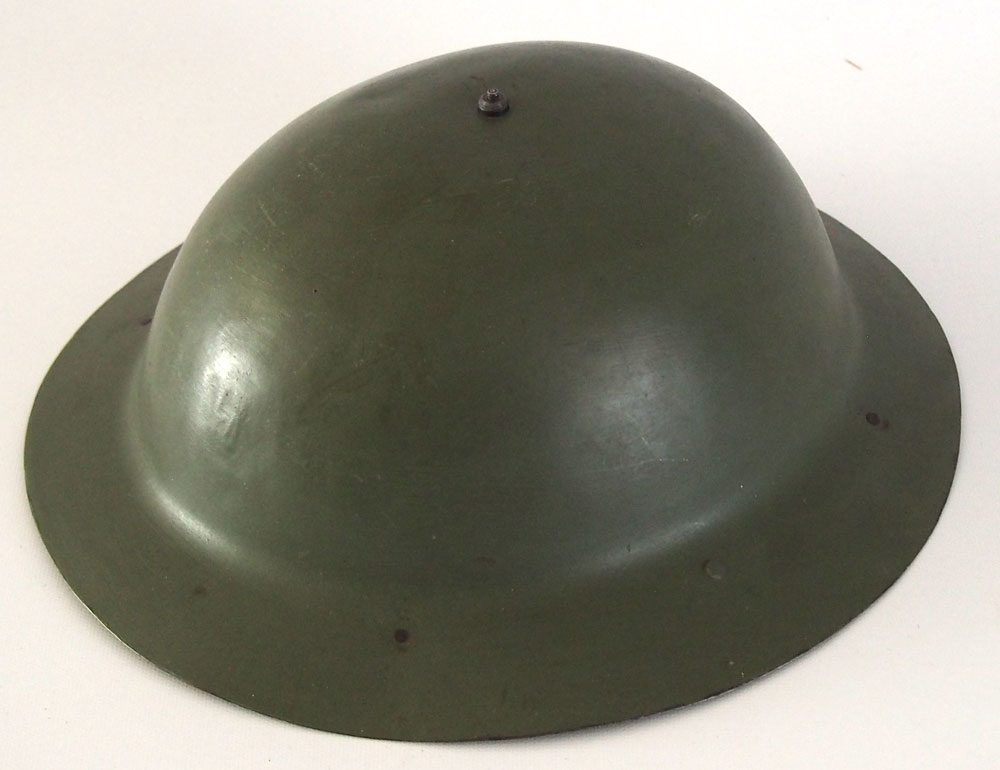 While steel helmets never completely disappeared from the battlefield – and helmets were worn by cavalry units throughout the 18th and 19th centuries – at the outbreak of the First World War in 1914 most British infantrymen wore only the Home Service Helmet as part of a dress uniform and for parade type duties. Forage caps were the standard headdress for soldiers in the field, but by 1916 it was apparent that soft caps as well as sun helmets that were worn in tropical regions weren’t enough to protect against head wounds from artillery barrages or other low velocity impacts. Continue reading
While steel helmets never completely disappeared from the battlefield – and helmets were worn by cavalry units throughout the 18th and 19th centuries – at the outbreak of the First World War in 1914 most British infantrymen wore only the Home Service Helmet as part of a dress uniform and for parade type duties. Forage caps were the standard headdress for soldiers in the field, but by 1916 it was apparent that soft caps as well as sun helmets that were worn in tropical regions weren’t enough to protect against head wounds from artillery barrages or other low velocity impacts. Continue reading
Tag Archives: World War I
Sun Helmet of the British Machine Gun Corps (MGC)
The machine gun played a major role in the First World War, and it could be argued that one of the reasons the war on the Western Front turned into a stalemate was that the rapid fire machine gun made a maneuver virtually impossible. The machine gun was thus responsible for the trench warfare that ensued as soldiers “dug in” as each side blasted away at one another.
Ironically perhaps the same gun that created this situation was considered to be the solution. The British Army formed the Machine Gun Crops (MGC) in October 1915 in response to the need for more effective use of machine guns. Continue reading
The Original Camouflage: Khaki Part I – The Origins and Use in the British Army
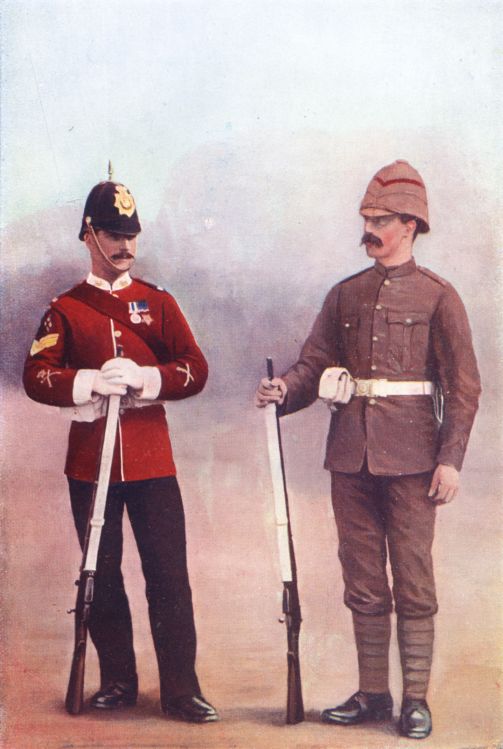
The late 19th century saw the era of “Red Coats” pass as British soldiers on campaign donned khaki – which was soon to become the first true universal camouflage
Today camouflage has gone high-tech, with digicam or “digital camouflage” being the preferred pattern. This utilizes small micro-patterns as the method for effective disruption, as opposed to the large blotches of cover, which could be easier to spot with the naked eye. This is of course leaps and bounds over the earliest camouflage, which consisted of solid patterns. Among the earliest was khaki. While known for the casual pants, khaki has a long history as the first widespread military camouflage.
This is part I of a multiple part series on the origins and development of “the Original Camouflage.” Continue reading
The Portuguese 1913 Helmet
The fall of the Portuguese Monarchy, on October the 5th 1910, brought about deep changes in Portuguese military uniforms. The very first measure, taken as early as October the 8th, was the abolishment of the use of royal crowns on the uniforms. In most uniform items, the royal crowns could simply be disassembled, but that was not always so. In buttons, the crowns had to be filed and in helmet front plates, they had to be cut. Most of the surviving helmets keep their front plates complete, so it is likely that this type of headdress was scarcely worn in the early days of the Republic. Continue reading
Winston in Pith Helmets
Sir Winston Churchill wore many hats in his life. He was a writer, scholar, soldier, politician, painter and above all English gentleman. Winston as he was often known by friend and foe alike was a Victorian soldier of the Queen, a First World War Lord of the Admiralty and, of course, during the Second World War the Prime Minister.
His most famous hat was his Bowker, but he also sported a Homburg hat as often, and as a soldier wore visor caps and in France in World War I a steel helmet. But of course we remember Mr. Churchill in many a sun helmet! Continue reading
Straw and Wicker Helmets
This was the standard pattern used by the Afrika Korp. While most of these were made of cork, there are many examples that were apparently made of weaved straw with wicker support. This example, while in bad condition offers an excellent look at the “inside” of the helmet
While sola pith and cork are among the most commonly used materials in the construction of sun helmets, straw weave and wicker were used at times as an ersatz material, especially in wartime. We previously noted two examples of British-made Wolseley straw helmets in the collection of Stuart Bates. While these are the only two known surviving examples of British straw helmets of this pattern, there are many surviving examples of straw helmets from other countries.
How many of these helmets were produced remains a mystery, but surviving examples given an indication that serious craftsmanship went into their construction. Continue reading
Ottoman Turkish Sun Helmets: The Kabalak
Chris Flaherty, lives in London, and has a long-term interest in militaria collecting, curation, preservation and research. He has written extensively on World War I Ottoman Turkish military history for the UK Armourer magazine and Soldier of the Queen (journal).
To discuss the Turkish Kabalak, we must firstly dispel a few myths; some 40 years ago a book on German steel helmets accidentally transposed the Ottoman Turkish contracted M18 helmet, with a visorless version (which made its first appearance after World War I in the hands of the German Freikorps units), both of which had been made by Eisenhüttenwerk Thale.1 Continue reading

